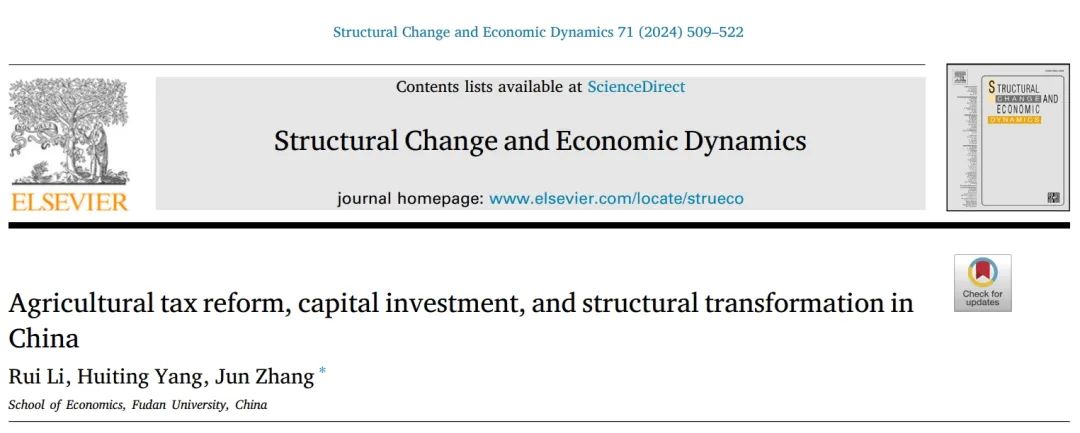
意昂2平台張軍教授與其指導的博士生李睿,楊惠婷👻,近期在結構轉型領域國際知名期刊Structural Change and Economic Dynamics發表研究論文。
Rui Li , Huiting Yang , Jun Zhang. Agricultural tax reform, capital investment, and structural transformation in China[J]. Structural Change and Economic Dynamics,Volume 71,December 2024, Pages 509-522
作者及單位🔰:
李睿➔、楊惠婷🧑🌾🤚🏽、張軍,意昂2
內容簡介摘要:識別結構轉型的驅動因素對於理解經濟發展至關重要。在21世紀初,中國經歷了勞動力從農業部門向非農部門的快速轉移。通常認為,這一轉移主要歸因於工業部門的“拉力”作用,而農業部門的“推力”則很少被關註。本文探究了結束兩千多年農業稅製度的農業稅免征改革在促進中國勞動力跨部門配置中的作用。研究結果發現🛤,農業稅免征改革顯著增加了非農部門勞動力的比例👰🏼♂️。機製分析表明🈷️🫶🏻,該改革鼓勵了農民的資本投資並提高了農業生產率🧑🦼➡️,從而促進了農業剩余勞動力的轉移。進一步分析發現,改革引發的勞動力再配置效應顯著增加了第二產業的就業和產出,但對第三產業的影響相對較小🙍🏿。
關鍵詞👩🏿⚕️:農業生產率,結構轉型🧑🏼🚒,農業稅改革,資本投資
Abstract: Identifying the driving forces of structural transformation is crucial for understanding economic development. In the early 21st century, China experienced a rapid labor shift from agricultural to non-agricultural sectors. This shift is often attributed to the industrial sector’s ‘‘pull’’ force, while the agricultural sector’s ‘‘push’’ force remains less understood. This paper investigates the role of the Agricultural Tax Exemption (ATE) reform in promoting inter-sectoral labor reallocation in China, which ended over two millennia of agricultural taxation on farmers. Our results show that the introduction of the ATE reform contributed to a significant increase in the share of non-agricultural workers. Mechanism analysis reveals that this reform encouraged capital investment among farmers and improved agricultural productivity, consequently displacing surplus agricultural workers. Further analysis shows that the labor reallocation induced by the reform had significantly increased employment and output within the secondary sector, although its effect on the tertiary sector was relatively minimal.
Keywords: Agricultural productivity, Structural transformation, Agricultural tax reform, Capital investment
 返回頂部
返回頂部